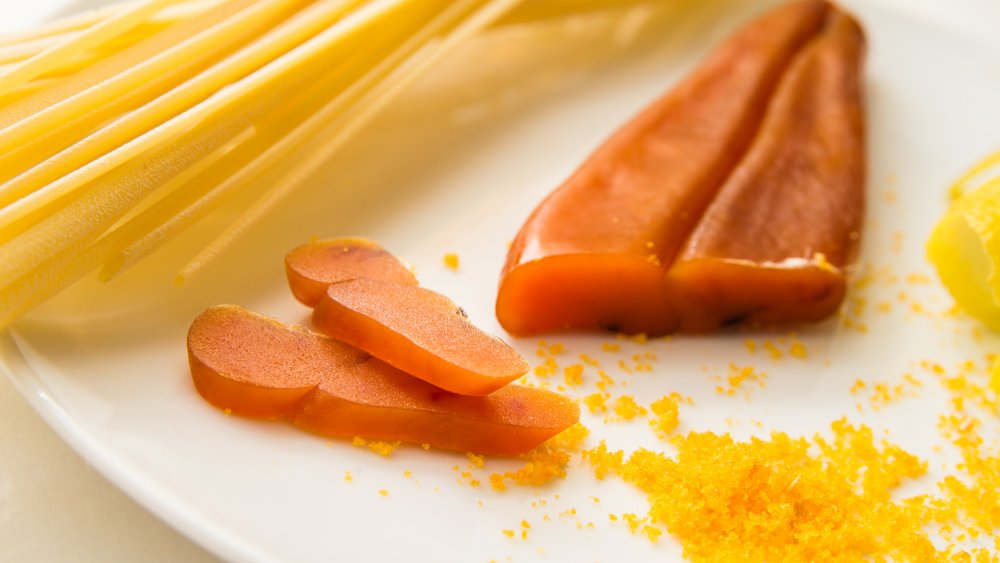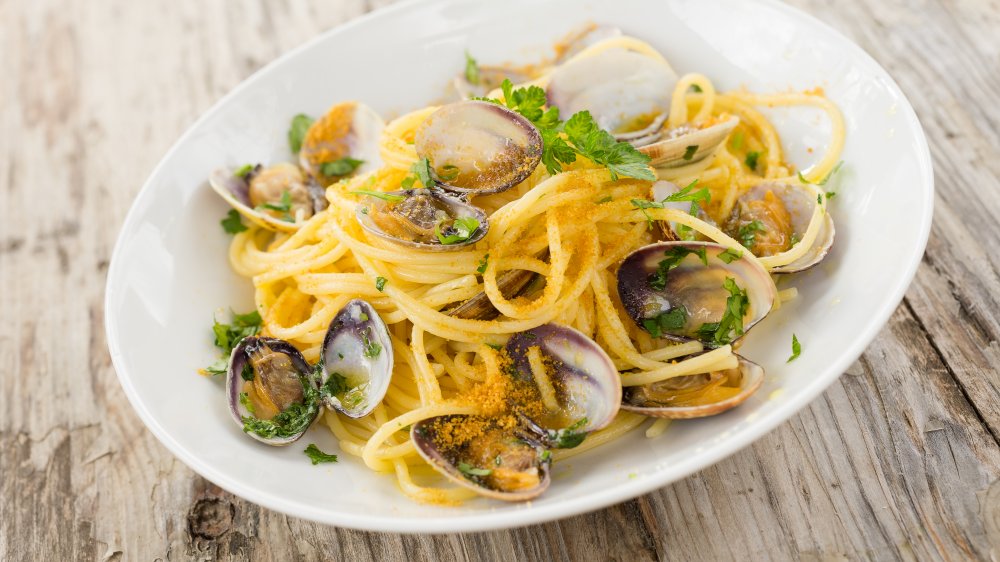What Is Bottarga And What Does It Taste Like?
We may receive a commission on purchases made from links.
If you've never heard of bottarga, you're not alone. Some people can't even pronounce it — don't worry, we had to Google it, too. Bottarga (remember to roll that B into a V) is cured fish roe that is taken from the likes of grey mullet, swordfish, or even bluefin tuna, that is dried into slabs. Sometimes referred to as Mediterranean caviar, it is often considered a delicacy. First used by fishermen in ancient times when waste not, want not was more than just a mantra, bottarga was considered a labor intensive product to create (via Great Italian Chefs).
Fast forward to present day and this staple for the Italian islands of Sicily and Sardinia, is going mainstream. Bottarga was barely known in the United States a few decades ago, but Mario Batali was one chef who encouraged the masses to grate over their favorite pasta. Per Detroit News, most bottarga we eat in the United States is imported from Pescasarda, Sardinia. In fact Sardinia's shores are where the first bottarga factory was built. Today, bottarga is enjoyed sprinkled over all things Italian, vegetables, pizzas, salads, and even over your scrambled eggs. But what does this fishy luxury taste like?
Bottarga is very similar to Parmesan
Bottarga is often described as deeply savory and is grated and used in a manner similar to how Parmesan cheese is used to create a burst of umami that must be experienced to truly appreciate (via Serious Eats). The Great Italian Chefs blog notes that the intensity of the flavor will largely depend on the fish roe used to create the bottarga. For example, bottarga made with a roe of a grey mullet caught in the lakes of Sardinia and the lagoons of Tuscany can have an intense flavor, yet a bitter aftertaste that is enjoyable to the taste buds. While bottarga is rising in popularity, don't expect to find it at your local grocery store. You will have better luck at a specialty market or even Amazon.
When you are ready to use your bottarga, you will notice that is wrapped in a thin papery skin called the pellicle. You will want to make sure you peel that back before you start grating. Don't worry if you aren't able to use it up quickly — a fun fact about bottarga is it's "rot resistant." According to Macchi Inc.'s blog, its shelf life is about five years when kept wrapped up tightly in plastic wrap and stored in the refrigerator.

